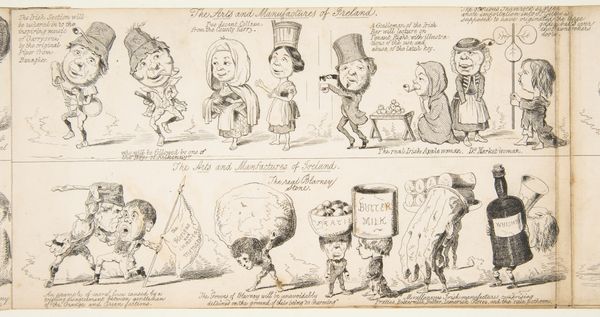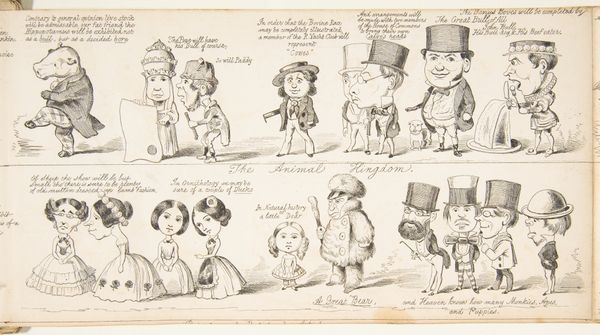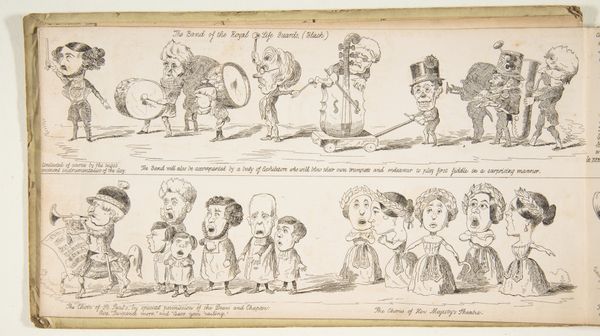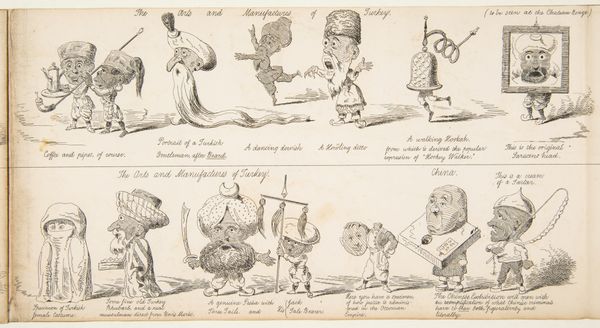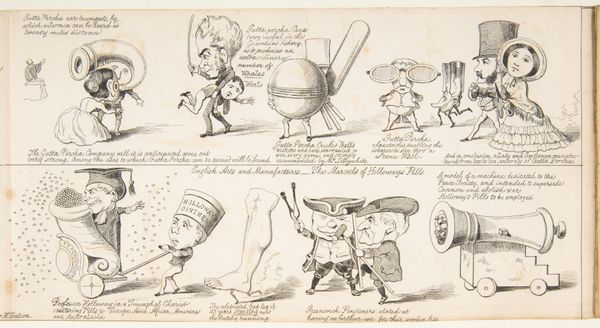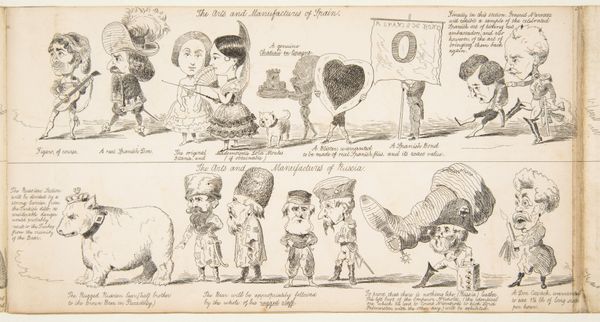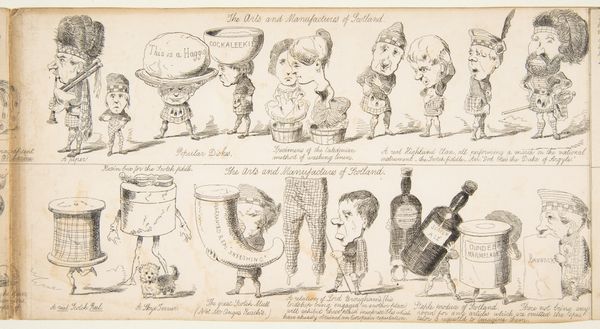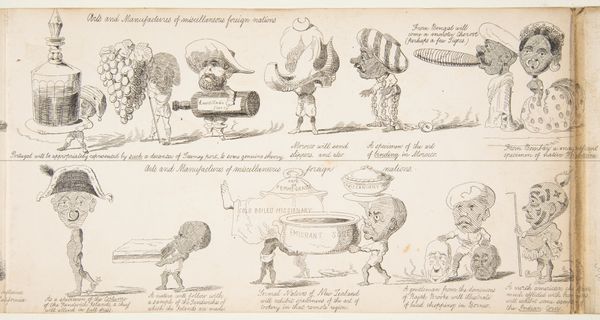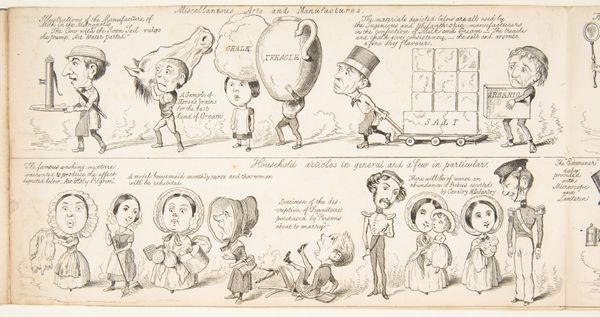
The Great Exhibition "Wot is to Be", Probable Results of The Industry of All Nations in The Year '51, Showing What is to be Exhibited, Who is To Exhibit, in Short How Its All Going to Be Done 1850
0:00
0:00
drawing, print, ink, pencil
#
drawing
#
narrative-art
# print
#
caricature
#
ink
#
romanticism
#
pencil
#
genre-painting
#
academic-art
Dimensions: sheet: 5 1/16 x 9 5/16 in. (12.8 x 23.7 cm)
Copyright: Public Domain
Editor: This is "The Great Exhibition 'Wot is to Be'..." by George Augustus Sala, created in 1850. It’s a drawing using ink and pencil, anticipating the results of the Great Exhibition. It feels incredibly satirical, full of caricatures. What do you see in this piece? Curator: Immediately, I'm struck by how it uses recognizable figures and objects to convey a broader social commentary. It's not just about individual personalities; it's about their symbolic weight. For instance, consider the juxtaposition of the 'hardware manufactures' with the political figures below. Do you notice any repeated motifs or visual links across these groupings? Editor: I see that a lot of the figures seem weighed down or burdened by something, whether it’s hats, instruments, or even their own exaggerated features. Curator: Exactly. The weight itself is a symbol, pointing to the burdens of industrial progress, societal expectations, and even political responsibility. Think of how such visual metaphors play into a larger cultural memory, the way these figures would have been understood and remembered. The Great Exhibition was meant to showcase progress, but Sala seems to suggest progress comes with its own set of burdens and absurdities. How does that change your interpretation of the piece? Editor: It makes the satire much sharper. It's not just funny, it's making a statement about the cost of progress. Curator: Precisely. The humor is a vehicle, allowing these potent cultural symbols to sink deeper into the viewer’s consciousness, long after the initial laugh. It highlights how intertwined individual identities and societal trends really are. Editor: That's a completely different way of seeing this piece. I initially saw it as just a funny drawing, but it's packed with cultural meaning.
Comments
No comments
Be the first to comment and join the conversation on the ultimate creative platform.

